- Destinations
- Travel Styles
- About Us
- Contacts
- Destinations
- Travel Styles
- About Us
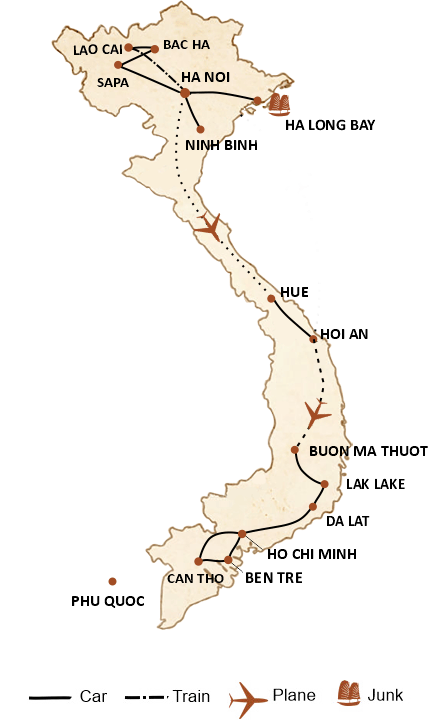
Touching down in Hanoi, the vibrant millennium-old capital nestled in the heart of northern Vietnam, you'll be warmly greeted by our English-speaking guide from Kampá Tour right at the airport. Once you've settled into your hotel in the buzzing city center, your day will unfold based on your arrival time.
Dive straight into the city's rich history and charm with your first set of visits:
Ly Thai To is the founder of the Ly dynasty (1009-1225). It was he who transferred the capital from Hoa Lu to Hanoi in 1010
This Old Quarter is located in the heart of Hanoi and is full of old houses, temples, bustling markets, artisan shops, and traditional restaurants. It is an emblematic place that testifies to the history and culture of the Vietnamese capital.
Discover the colonial heritage with French concessions: take a cycle rickshaw ride through the city to visit the Grand Théâtre, the Métropole hotel, the state bank, the Central Post Office… End your day with a relaxing night at the hotel.
This begins your unforgettable Vietnam 3 weeks from north to south with Kampá Tour.
A day dedicated to exploring Hanoi's most remarkable cultural sites and historical monuments:
Built 1000 years ago, this Confucian temple served as an institution where royal offspring and sons of mandarins received their education. It also hosted competitions for the country's most talented students, with the winners attaining the status of scholars and senior officials in Vietnamese feudal dynasties.
Colorful wooden puppets are skillfully manipulated by the artists using rods and bamboo shafts underwater. It is a unique and captivating art form unique to the Northern Vietnamese tradition.
Each compartment is divided into small cabins, equipped with 2 to 4 berths. Amenities are located outside the cabins and are shared. If you are traveling as a couple, you have the choice between a cabin with 2 berths or privatizing a cabin with 4 berths for more privacy.
Arriving early at Lao Cai train station, you will be greeted by a local English-speaking guide and transferred to a small hotel near the station for a shower and breakfast.
From there, you'll journey to Bac Ha, a charming and peaceful town located approximately a hundred kilometers northeast of Sapa. Upon arrival, you'll set off on hiking adventures to explore the mountains, hills, valleys, and ethnic villages in the Bac Ha region. You'll trek through pine forests to reach Ngai Phong Cho, a village inhabited by the Flower Hmong and Phu La ethnic groups, where traditional thatched houses can still be found.
If time allows, you can continue the hike to Thai Giang Pho, known as the "Valley of Flowers," and visit the rarely-touristed villages of Thai Giang Pho and Na Lo, which are inhabited by the Tay and Black Hmong minorities. There is also an opportunity to visit a local family that specializes in rice wine production, a regional specialty, to learn about the local techniques.
At the end of the day, finding comfort and warmth with a welcoming Tay ethnic family.
Homestay accommodations typically consist of a single room within a traditional house, which can be either wooden or on stilts, depending on the host family's setup. You can expect to find mosquito nets, mattresses, and clean sheets provided on-site. The bathroom, equipped with hot water and towels, along with shared toilets, are usually situated outside the main house.
In the evening, enjoy a shared dinner with the host family—a special opportunity to delve into their way of life and experience the customs of the Tay minority.
In accordance with the day, you may be in for a treat with a visit to a weekly market, bustling with local minority communities around Bac Ha. This is your chance to enjoy the vibrant tapestry of ethnic groups gathering at the market—trading goods, sharing news, and threads of their respective cultures.
After this cultural meeting, the journey unfolds as we transfer to Sapa, a former French colonial retreat & ancestral home of the Hmong, Dzao, and Dzay minorities.
Come afternoon, our exploration extends to the charming villages of Hang Da and Sa Seng. Amidst the karst limestone formations of Hang Da, we'll meander through quaint hamlets, witnessing the rhythm of various agricultural activities.
Continuing towards Sa Seng, a picturesque valley cradled between mountain ranges, the journey leads through lush forests and pristine waterways. Capture the essence of the landscape with photo opportunities aplenty—be it the sprawling rice fields, or vibrant tomato and cabbage farms.
As the day gracefully bows out, we return to town, where a restful night at the hotel awaits.
A day of hiking amidst the breathtaking and exotic landscapes of the Muong Hoa Valley.
Explore the ethnic villages scattered across the valley, including Y Linh Ho and Lao Chai inhabited by the Black Hmong, and Ta Van home to the Dzay minority.
Encounter local residents as they labor in the rice fields, offering insights into their daily routines and way of life.
As the day comes to a close, embark on a scenic drive back to Hanoi (approximately 5.5 to 6 hours).
Spend the night at the hotel.
Departure for Ninh Binh – land of limestone rocks, sugar loaves and rice fields flooded by rivers and lakes all year round.
Arrival in Ninh Xuan, visit Mount Mua. Climbing a white staircase of 486 stone steps to the summit, this bell-shaped mountain will offer you a panoramic view of the Tam Coc region.
A limestone mountain located near the rivers and sugar loaves of Tam Coc. In the past, it was famous for its dance performances offered to the kings of the Tran dynasty (13th-14th century).
Then transfer to Tam Coc, bike ride and relax to discover this fabulous region.
A vast landscaped area including sugar loaf rock formations, rice fields and rivers. Boat trips on the Ngo Dong River, through the sugar loaves, will allow you to fully enjoy the lush surrounding nature.
In the afternoon, enjoy a boat trip along the Ngo Dong River to explore the beauty of Tam Coc. This meandering river takes you through lush rice fields, past picturesque sugar loaf hills, and beneath the three enchanting caves nestled at the base of towering limestone peaks.
Overnight stay in Ninh Binh.
Head out on a journey to Halong Bay, often hailed as the most stunning bay in Vietnam and one of the most enchanting landscapes in all of Asia. Step aboard a traditional junk upon arrival and receive a warm welcome from the crew. Set sail for an unforgettable cruise across the bay, where you'll have the opportunity to explore the northern part of Halong Bay, known as Bai Tu Long:
We provide shared junks, typically smaller in size with 10 to 12 cabins, suitable for hosting around twenty passengers. Alternatively, you have the choice of selecting a private cruise on a smaller junk, offering one or a few cabins, for a truly unforgettable experience. Don't hesitate to get in touch with us if you're interested in this option.
End of the afternoon, relaxing on the upper deck of the junk.
Participation in a culinary demonstration on board, preparation of spring rolls or spring rolls.
Tasty seafood lunch and dinner.
Free evening for your personal rest and relaxation: card games, night fishing…
Night on board.
Rise at dawn to savor a truly unique spectacle: the first rays of sunlight peering over the countless sugarloaf peaks of the bay, followed by a serene Tai Chi session on the terrace.
Tai Chi, the art of deep relaxation, involves performing a series of slow, flowing, and circular movements.
Embark on a boat or kayak excursion to explore the charming fishing village of Vung Vieng, where you may have the chance to meet local residents.
Enjoy lunch on the junk, then disembark and return to Hanoi.
In the evening, catch a flight to Hue, the historic imperial city located in the heart of the country.
Spend the night in Hue.
Departure for a city tour of Hue (Hue being the last imperial capital of Vietnam 1802-1945)
Night at the hotel.
Day excursion to discover the villages and pagodas around Hue.
Board a boat for a stroll upstream of the peaceful Perfume River. Stop at the Thien Mu Pagoda located on a green fir hill, then at the village of Thuy Bieu, which specializes in planting grapefruits known for their quality. Bike ride around the Thuy Bieu village, on paths shaded by thousands of grapefruit and fruit trees... the opportunity to immerse yourself in serene and green nature. Installation with a peasant family, meeting with the hosts. Participation in the preparation of lunch, tasting dishes cooked by yourself.
In the afternoon, transfer by car to the Sinh Folk Painting Village, which is known for making worshiping paintings... Walk around the village, stop at Mr. Ky Huu Phuoc, the artist with 60 years of experience, discovery of the stages of making decorative paintings for tourists or to buy those paintings as souvenirs.
Continuation of the visit with the village of Thanh Tien, which specializes in the manufacture of paper flowers. This 400-year-old profession has been passed down from generation to generation until today. Here, all kinds of flowers (lotus, rose, tuberose, sunflower, etc.) are reproduced in paper, bamboo, and other local materials. It's really hard to tell the real thing from the fake. Visit a factory to understand the work of very skilled craftsmen.
Return to Hue, the rest of the day is free for rest.
Night at the hotel.
Begin your drive for Hoi An, an ancient small town located 150 km south of Hue. Several stops are planned along the way:
This pass acts as a natural climatic divide between the northern and southern regions of the country. From its summit, you can behold the breathtaking bays of Lang Co and Da Nang, stretching as far as the eye can see.
In the afternoon, arrive in Hoi An, complete the check-in process at the hotel, and settle in for an overnight stay.
Start off for an enthralling walking tour through Hoi An's captivating old quarter, often hailed as 'the most charming city in Vietnam.' This journey will unveil the following must-see sites:
Following this walking adventure, go on a scenic bike ride into Hoi An's picturesque countryside. Navigate through verdant rice fields, quaint hamlets, thriving shrimp farms, and lush vegetable gardens. The journey leads you to the charming village of Cam Chau, offering a visit to a lantern factory. Gain insights into the intricate lantern-making process, from bamboo basketry to dyeing and paper crafting, while learning about traditional techniques.
As the day gracefully comes to an end, return to Hoi An. Having experienced the timeless beauty and craftsmanship of this remarkable city, you'll carry the essence of Hoi An with you.
Enjoy a fully free day for independent exploration of Hoi An's Old Town:
Overnight stay at the hotel.
Take a flight to Buon Me Thuot, the capital of the Southern Highlands. Situated in the southern part of the country, nestled between Cambodia and the Eastern Sea coast, the Highlands are a high-altitude sub-region characterized by a temperate climate. This region is renowned as the "Land of Elephants," famous for its captivating waterfalls, and lush coffee and tea plantations.
After reaching the destination in Buon Me Thuot, set out for a visit to two of the region's most stunning waterfalls, Drey Nur and Drey Sap. These cascading wonders offer a glimpse into the natural beauty that defines the Southern Highlands.
Retire for the night at your hotel, ready to explore more of the highland's treasures in the days to come.
Set off for Lak, a region predominantly inhabited by the Mnong ethnic minorities. This promises to be a day filled with unique experiences:
In the afternoon, your journey continues as you make your way to Da Lat, often referred to as the old French resort of the Hauts Plateaux. This charming city is known for its colonial-era architecture and stunning natural surroundings.
Conclude your day with a comfortable night's stay at your hotel, preparing for more adventures and discoveries in Da Lat.
Explore Da Lat, a high-altitude town surrounded by hills and pine forests, known for its colonial-style architecture:
Catch a flight to Ho Chi Minh City, the capital of the South, formerly known as Saigon. Upon your arrival, immerse yourself in the heart of the city, often referred to as "colonial Saigon." Your day's exploration includes:
As the sightseeing tour concludes, you will be dropped off at your hotel, giving you the freedom to explore the city at night.
Commence on the trip to the Mekong Delta, an amphibious territory in the far south of the country.
Upon reaching Ben Tre, a bustling town situated in the heart of the northern arms of the river, our adventure unfolds with a boat trip along the winding rivers to reach Mo Cay. This little-known rural gem, celebrated for its coconut trade and the artisanal production of coconut-based delights—coconuts, coconut threads, and activated coconut carbon—beckons with its authenticity and charm.
You can explore with a bike ride or a ride on a Xe loi (motorized cycle) through the lush green island, adorned with coconut plantations. Our off-the-beaten-path route winds along small paths under the gentle shade of coconut trees, creating a poetic landscape. Make stops at local farms to witness the artistry behind the creation of sweets and coconut brooms.
Continue your adventure with a serene trip in a small rowing boat through the arroyos, flanked by water palm trees, allowing you to immerse yourself in the daily rhythms of delta life. Visit Mr. Van's traditional house and savor local specialties crafted by his wife, including coconut jam, tea with honey and pollen - a delightful taste of the delta's flavors.
As the afternoon unfolds, we'll transfer to Vinh Long, arriving at the island of An Binh ("peace") nestled in the heart of the Mekong. Find tranquility at Mrs.Thuy’s peaceful guest house, surrounded by a beautiful garden. Enjoy free time to unwind in the serene environment.
In the evening, become a part of the culinary experience as you participate in the preparation of the evening meal and later relish the dinner featuring your creations.
Spend a tranquil night at Madame Thuy’s.
Begin your day with warm greetings from your hosts, then embark on a drive to Vinh Long, renowned as the land of abundant fruits such as grapefruits, longans, and rambutans. Your day's itinerary unfolds as follows:
Explore the picturesque island of An Binh on a leisurely bike ride, taking in the beauty of lush orchards and indulging in the delightful flavors of seasonal fruits.
In the afternoon, continue your journey as you transfer to Can Tho, the capital of the Mekong Delta, situated on the right bank of the southern arm of the Mekong River.
Conclude your day with a comfortable night's stay at your hotel in Can Tho, ready for more adventures in this vibrant delta region.
Rise early and set forth on a boat journey along the Mekong River. Explore the vibrant Cai Rang floating market, a captivating and colorful spectacle where numerous boats are laden with a bounty of fruits, vegetables, and various goods for their lively commercial exchanges. This experience offers a fascinating glimpse into the unique "river trade" of the Mekong region's inhabitants.
Afterward, descending to visit the An Binh land market, situated opposite Cai Rang. Here, you'll have the opportunity to make an interesting comparison between the bustling floating market and the dynamic land-based market.
In the afternoon, return to Ho Chi Minh City, where you'll spend the night at your hotel, reflecting on the captivating sights and experiences of the Mekong Delta.
Enjoy a completely free day, allowing you to relax and make any final purchases or explore at your leisure.
In the evening, you'll be transferred to the airport for your departure flight.
Please note: There is an option to extend your journey to Cambodia at the end of this trip or to conduct this tour in the South-North direction.
This marks the conclusion of our 3-week Vietnam itinerary from North to South. Kampá Tour hope you've had a memorable and enriching experience exploring the diverse and captivating facets of Vietnam. Safe travels!
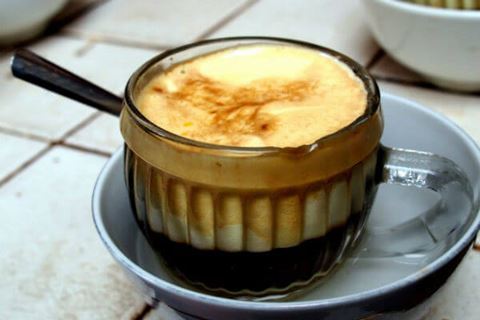
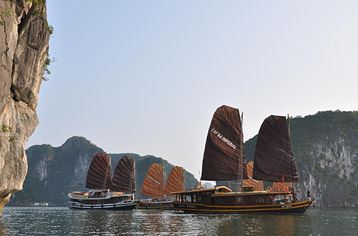
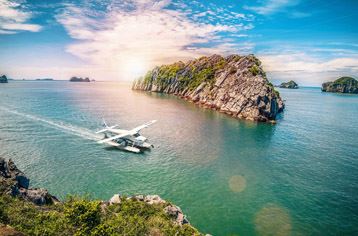
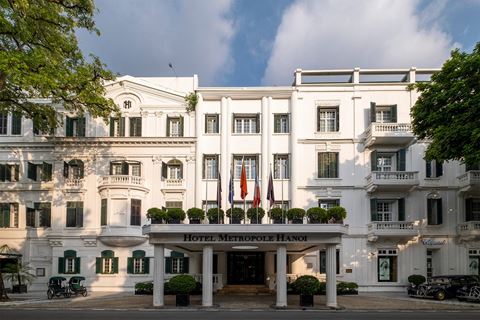
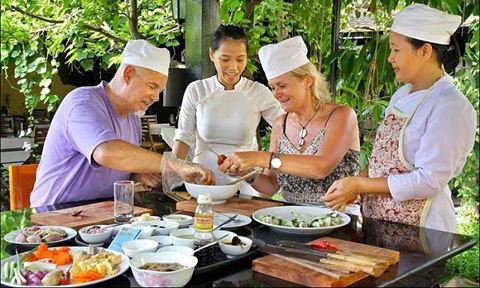
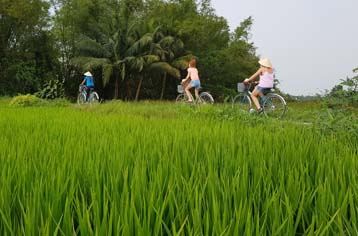
A 3-week journey in Vietnam offers several benefits:
Hiking Ta Xua Peak in Son La without a guide is not recommended due to its challenging and wild terrain. It is easy to get lost in the jungle.
Some of the best hiking spots in Vietnam, especially in the North and Northwest, include Ky Quan San in Lao Cai, Pha Luong in Son La, Lao Than in Lao Cai, Ta Xua Peak in Son La, and Lung Cung in Yen Bai. These places offer stunning landscapes and challenging trails. It is highly recommended to hire a private guide (porter) from companies like Kampá Tour, which provides experienced English-speaking guides. The terrain in these areas is very wild and unknown, and navigating without a guide can be difficult and dangerous due to the risk of getting lost in the jungle.
At Kampá Tour, we recommend the following times for hiking in Vietnam based on our extensive experience:
These recommendations ensure you have a pleasant and enjoyable hiking experience across Vietnam.
As an approximate guideline, the cost of a 2-week trip to Vietnam would be around 1450$ per person when traveling as a pair (excluding airfare). For a 3 or 4-week journey, please budget between 1900$ and 2500$ per person. If you're in a larger group (4 or 6 people), the trip will be more cost-effective. The price always varies depending on the duration and time of your stay, as well as your preferences (activities, services). Please leave us a quote request, and our travel advisor will provide you with more detailed information and a quote.
Yes, 3 weeks is enough to explore this beautiful country in-depth. This duration allows you to experience a wide range of the country’s diverse regions, from the bustling cities and historical sites to the serene countryside and stunning coastal areas. You can travel from north to south, covering major attractions and hidden gems alike.
Customized travel is a service where your journey is designed according to your preferences for dates, duration of stay, services, and budget. A local advisor assists you in preparing for the trip and supports you on-site, handling transportation, visits, accommodation, and more. This ensures you benefit from an organized trip tailored to your desires and constraints down to the smallest details.
If you agree with the itinerary proposed by one of our advisors, please send us an email to confirm the reservation of the tour with our agency. Your advisor will then provide you with the booking documents, including:
A reservation form containing detailed information about your booked tour, as well as your personal details and contact information to be completed. You will need to return the form with these details duly filled out, which will be used for the organization of your trip. Please also send us a scan of your passports.
A travel invoice requesting a deposit payment of 25% of the total price.
The organization of your trip will be confirmed upon receipt of the completed form and once the deposit is in our possession. We will also send you a travel contract that certifies the details of your trip, including the duration, travel dates, deposit paid, and your contact information."
The price displayed on our website does not include international flights and is calculated based on 4 people with standard hotels. Our tours are private with custom services, so the price varies depending on the travel period, the selected service category, and especially the number of travelers. Please contact us for a detailed quote for your trip.
Vietnam experiences a diverse climate from north to south, owing to its varied topography and the country's considerable length (2000 km from north to south). When one region is humid, cold, or rainy, the other can be pleasantly sunny in contrast. Based on our experience, the optimal time to visit Vietnam is from October to April.
Within this timeframe, the best months are October to November and March to May. During these periods, the weather remains pleasant, and, additionally, they are the least rainy months of the year in Vietnam. While July and August can be a bit hot (30-35 degrees Celsius), Halong Bay typically enjoys sunny weather. You'll also have the opportunity to witness the region adorned with endless terraced green or yellow rice fields.
Regarding the southern region, despite it being the rainy season, precipitation usually lasts for only an hour or two each day, with the rest of the day being sunny. If you already have a specific timeframe in mind for your trip (winter, summer, etc.), please inform us, and we can provide guidance on the most favorable months.
If you are from the UK, France, Germany, Spain, Italy, Switzerland, Poland, the Czech Republic, Russia, Japan, South Korea, Norway, Sweden, Finland, Denmark, or Belarus, you do not need a visa for Vietnam for stays up to 45 days. Switzerland, Poland, and the Czech Republic have a special exemption from March 1 to December 31, 2025, for organized tours.
Australia, New Zealand, Canada, and the United States are NOT visa-exempt and must obtain a visa before arrival. You have three options:
For the smoothest process, we highly recommend the E-Visa. Ensure your passport is valid for at least 6 months and have proof of onward travel. Contact us for visa assistance.
We provide well-maintained, comfortable private cars with air conditioning for your trip. They are often equipped with a cooler, allowing you to have cold water bottles. The number of seats will depend on the number of participants. Here are our criteria:
| Number of travelers | 2-3 | 4-8 | 9-15 | 16-20 |
| Car size | Private 7-seater car | 16-seater minibus | 24-seater bus | 35 or 45-seater bus |
Our drivers are professional, cautious, and friendly. If you wish, they are ready to make stops along the way so you can better admire a beautiful landscape, take photos, or simply relax.
Yes, it is entirely possible to make changes to the provided itinerary. We specialize in private and tailor-made trips, and our advisors will be able to adjust the program according to your every wish.
International cards such as Visa or Mastercard are widely accepted in hotels, shops, and restaurants. However, please note that Vietnamese banks may apply an additional commission of 3% to 4% for this type of payment.
You can also pay in euros or USD at some businesses in major cities (hotels, restaurants, etc.). However, for small expenses, it is more advantageous to have Vietnamese Dong (VND). You can easily exchange currency at banks, jewelry shops, or even at your hotel. You can also withdraw VND from ATMs.
As for the balance payment, you can settle it in one of the following ways:
In cash upon your arrival. We accept US dollars and Euros (USD/EUR exchange rate calculated on the day of payment). However, we do not accept defaced or excessively old banknotes. We kindly ask you to obtain new bills from your bank to avoid any inconveniences during your trip.
By credit card upon your arrival at our office (using our credit card terminal). In this case, there is an additional fee of 3% for our bank if you pay with Visa or Mastercard and 4% for payments with Amex. Payment is made in the local currency.
By bank transfer: We request that you complete this transfer no later than 10 days before your departure. This is to ensure that the balance of your trip is credited to our account before the start of your journey
To make the deposit payment, you have two options:
If you are traveling with young children, we always try to arrange either family rooms or connecting rooms or rooms next to each other. However, not all hotels in our country have family rooms, and these rooms are usually in high demand in July and August, the peak vacation period for families. Therefore, we recommend booking your trip early to ensure the availability of the services according to your preferences.
It's certainly the North, which comprises the Northeast and Northwest mountains. Located along the country's Laotian and Chinese borders, Northern Vietnam's mountains boast incredibly wild and breathtaking landscapes: limestone peaks and vast rolling hills as far as the eye can see, lush valleys with stunning terraced rice fields, winding roads and switchbacks on the mountain slopes. It's also the only region where the culture of minority ethnic groups remains strongly present: traditional villages, unique customs, colorful attire, and vibrant weekly markets. The region is a must-visit for nature enthusiasts, those interested in ethnic culture, and travelers looking to venture off the beaten path.
In general, the best time to visit Northern Vietnam is from September to November and from March to May. During this range of months, temperatures remain very pleasant, and there is less rainfall.
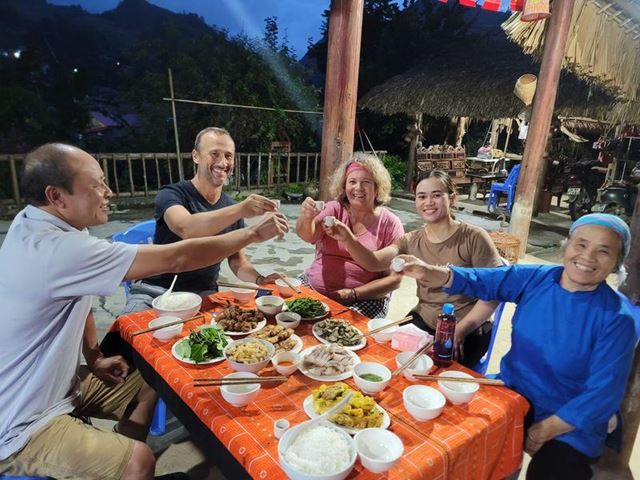
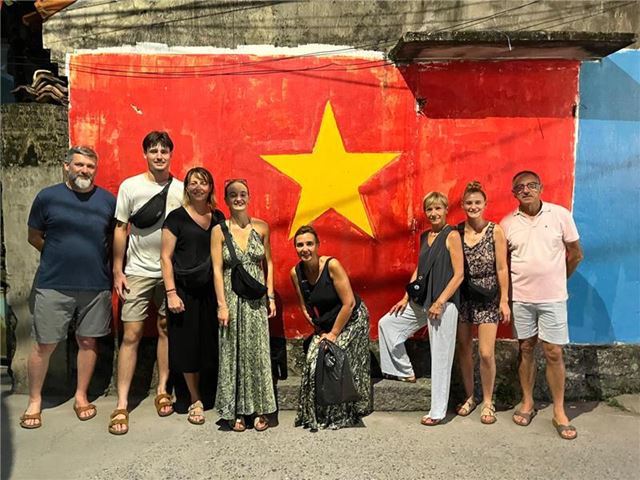
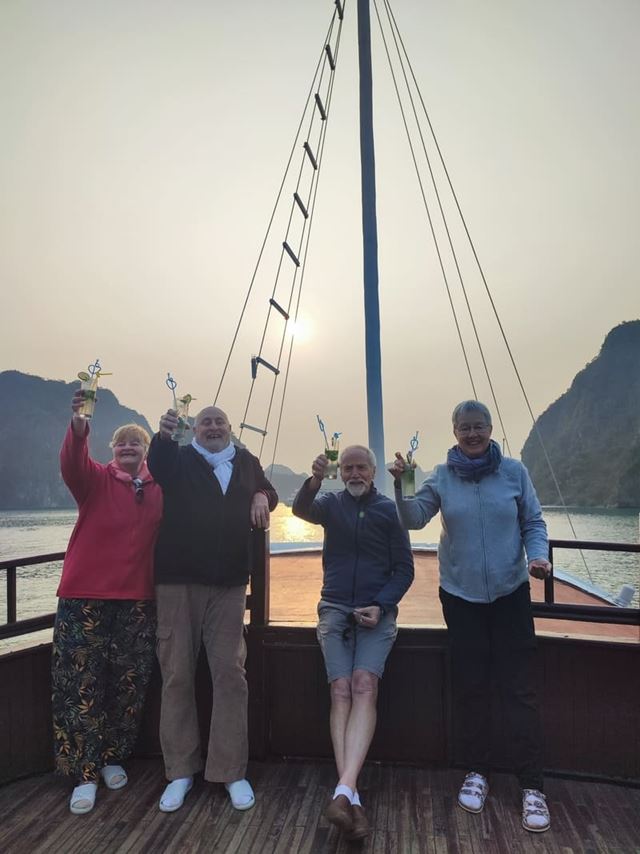
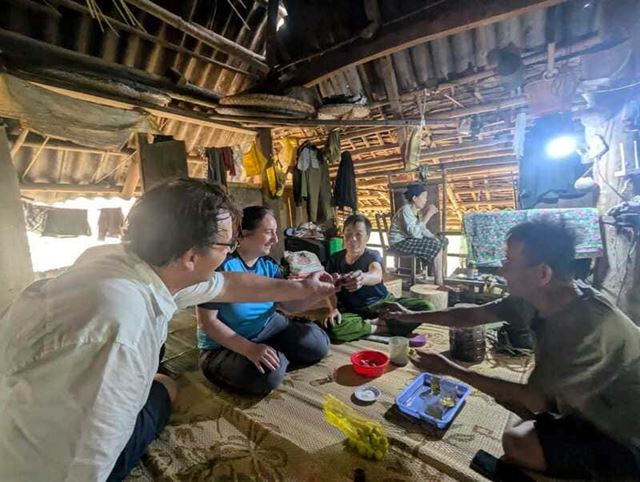
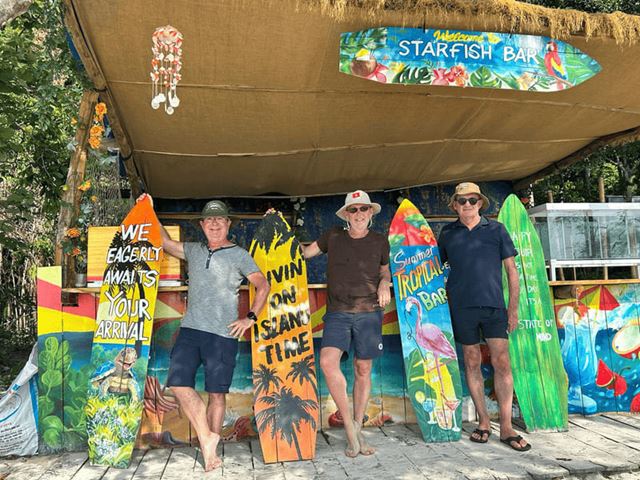
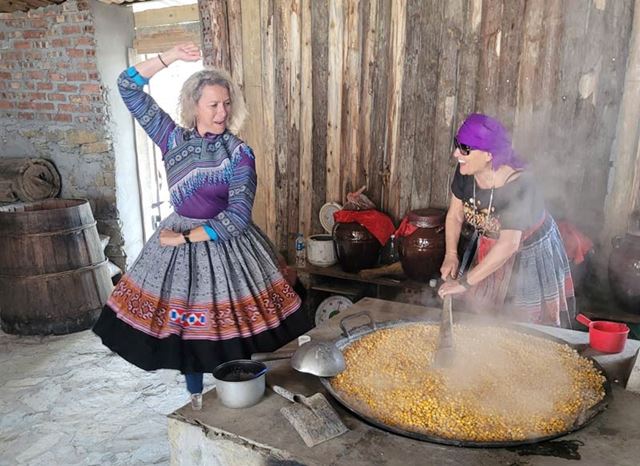
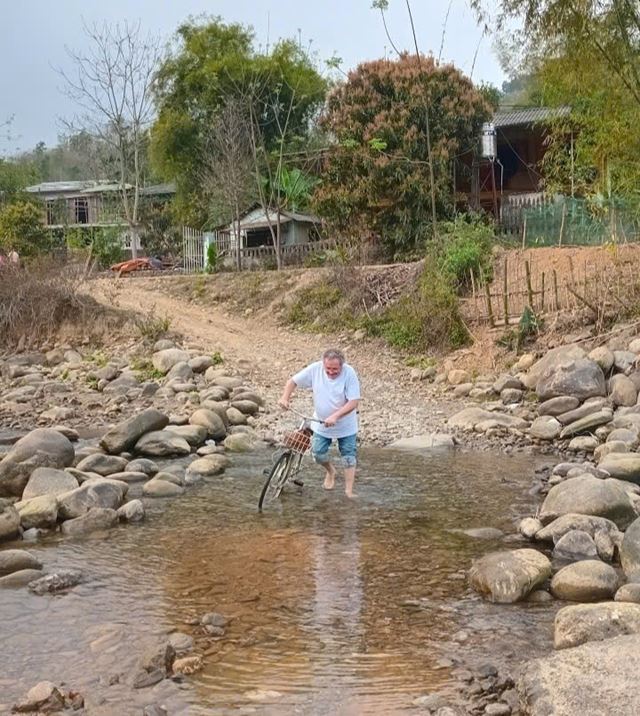
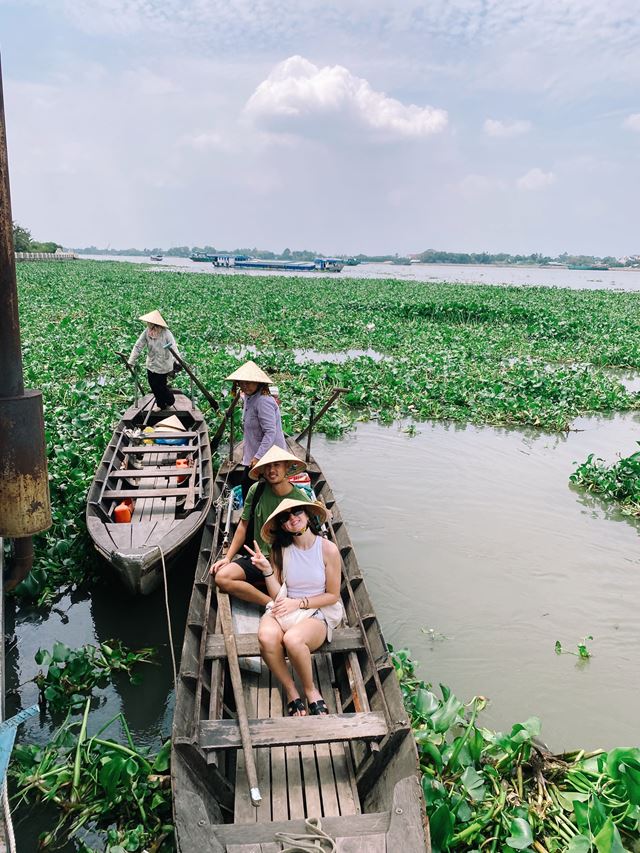
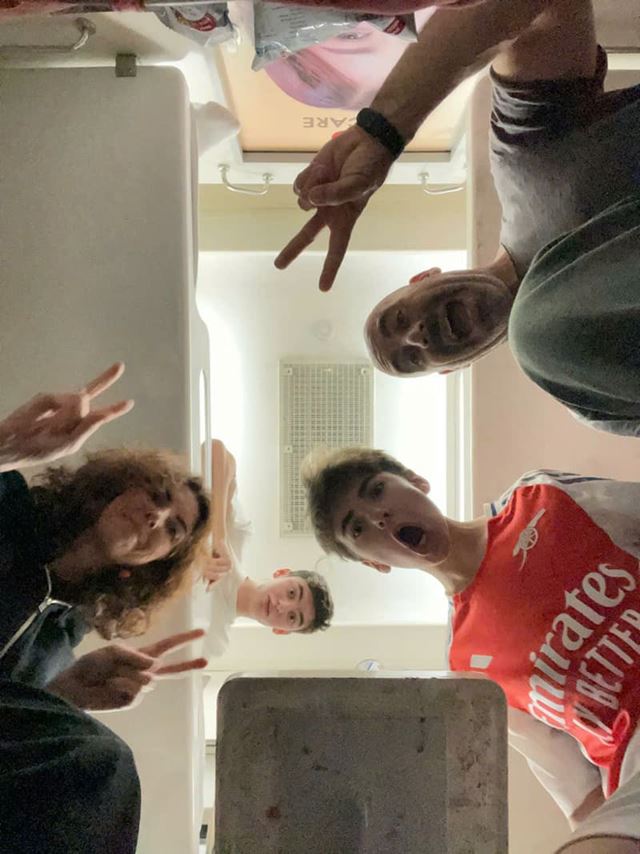
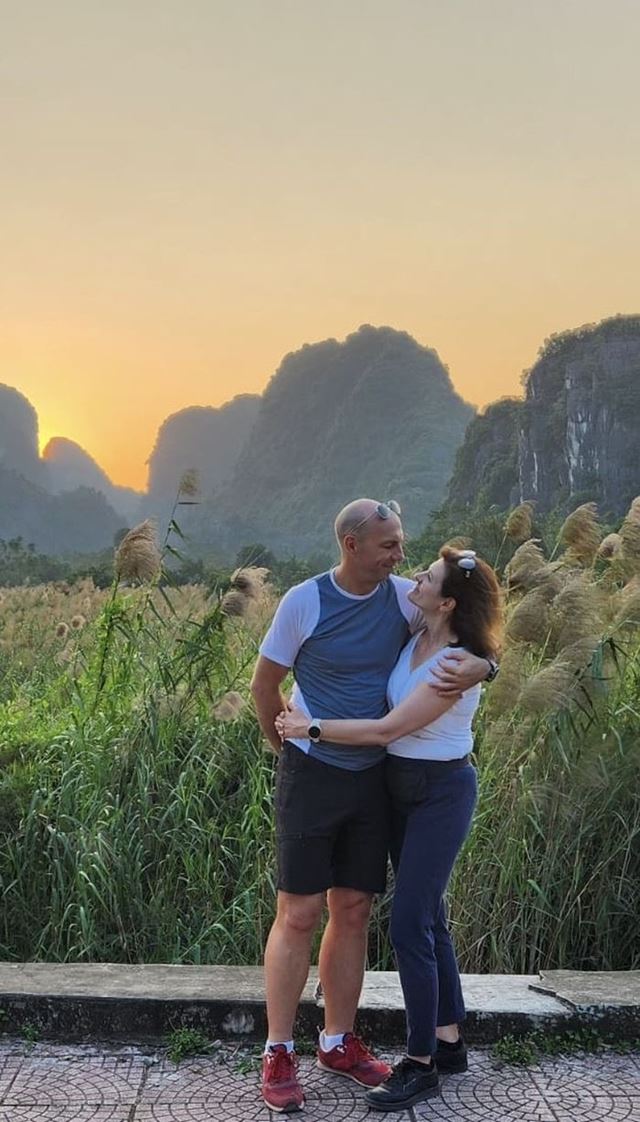
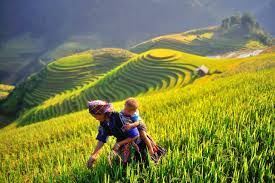 The Essentials
The Essentials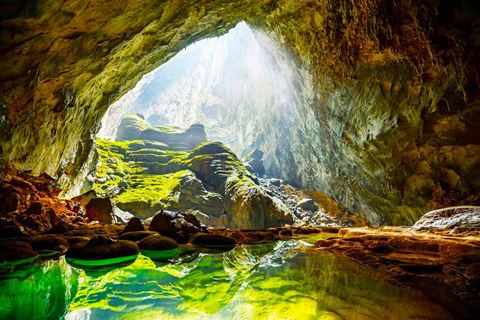 The must-sees in Vietnam
The must-sees in Vietnam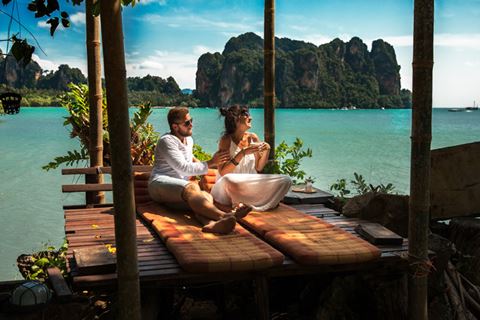 Couples & Relaxation
Couples & Relaxation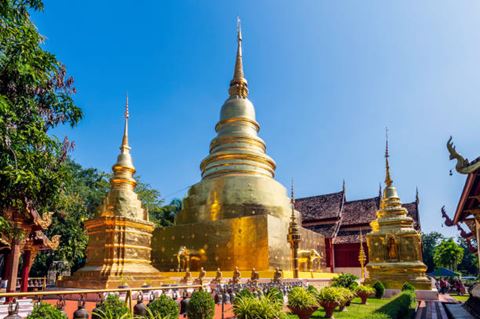 The must-sees in Thailand
The must-sees in Thailand
Comments
No comments yet - be the first to comment!